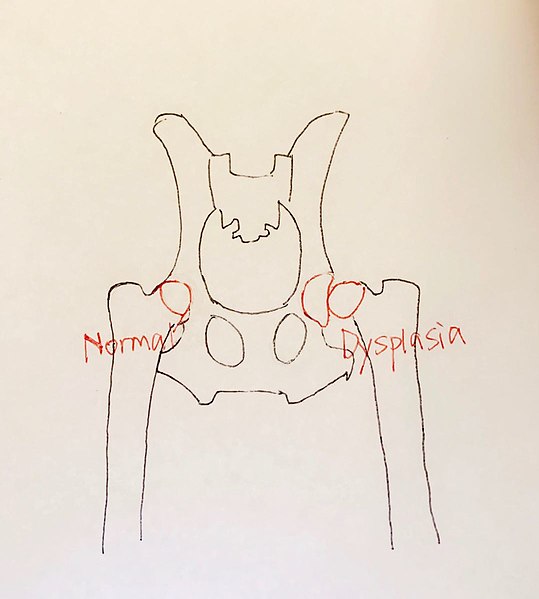Barlow and Ortolani Tests: Difference between revisions
No edit summary |
No edit summary |
||
| Line 1: | Line 1: | ||
This article is currently under review and may not be up to date. Please come back soon to see the finished work! | This article is currently under review and may not be up to date. Please come back soon to see the finished work! | ||
<div class="editorbox"> '''Original Editor '''- [[ | <div class="editorbox"> '''Original Editor '''- [[Kirenga Bamurange Liliane]] '''Top Contributors''' - {{Special:Contributors/{{FULLPAGENAME}}}}</div> | ||
== Description == | == Description == | ||
Revision as of 23:48, 5 April 2021
This article is currently under review and may not be up to date. Please come back soon to see the finished work!
Description[edit | edit source]
The instability of the hip may be assessed by the Ortolani and Barlow tests, which play a big role in the clinical screening for developmental dysplasia of the hip [1]. The Barlow Test is a physical examination performed on infants to screen for developmental dysplasia of the hip. Barlow’s test identifies posterior sublimations or dislocation. It is named after Dr. Thomas Geoffrey Barlow, who devised this test. It was clinically tested during 1957–1962 at Hope Hospital, Salford, Lancashire [2].
The Ortolani Test was described in 1936 by an Italian pediatrician Marino Ortolani; an outstanding pioneer in the early diagnosis and treatment of hip dysplasia. He describes it as a simple test that would establish a diagnosis of congenital dislocation of the hip in children one- year- old [3].
Technique[edit | edit source]
- Barlow
The Barlow test is a provocative maneuver used to reveal hip instability. The test is performed by standing at the end of the examination couch facing the baby. One hand stabilizes the pelvis whilst the other grasps the knee and flexes the hip to 90 °. The examiner’s fingers should lie over the greater trochanter with the thumb resting on the inner side of the thigh. The hip being examined is then adducted by 10-20 °. Gentle, but firm, backward pressure is then applied.
References[edit | edit source]
- ↑ Lotito FM, Rabbaglietti G, Notarantonio M. The ultrasonographic image of the infant hip affected by developmental dysplasia with a positive Ortolani's sign. Pediatric radiology. 2002 Jun;32(6):418-22.
- ↑ Barlow maneuver. Available from: https://en.wikipedia.org/wiki/Barlow_maneuver#cite_note-1 ( Accessed, 25/03/2021)
- ↑ Marino Ortolani. Available from: https://en.wikipedia.org/wiki/Marino_Ortolani (Accessed, 4/4/2021).








